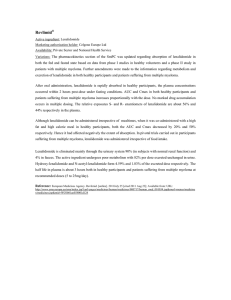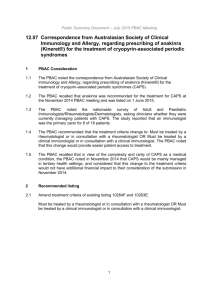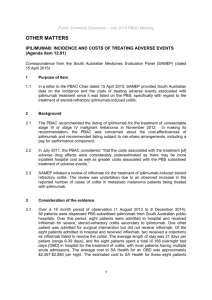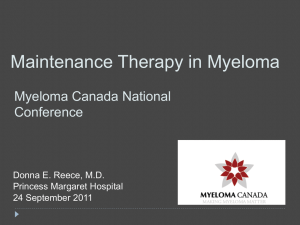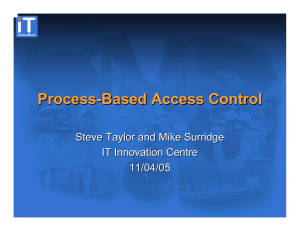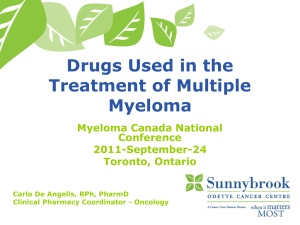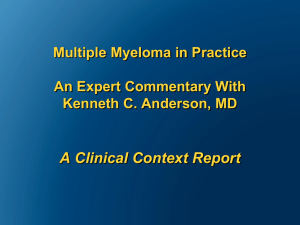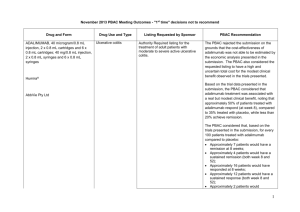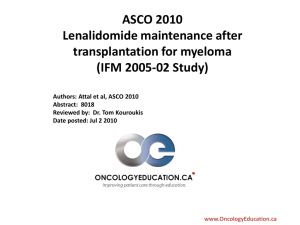November 2015 – Consumer hearing (Word 20KB)
advertisement
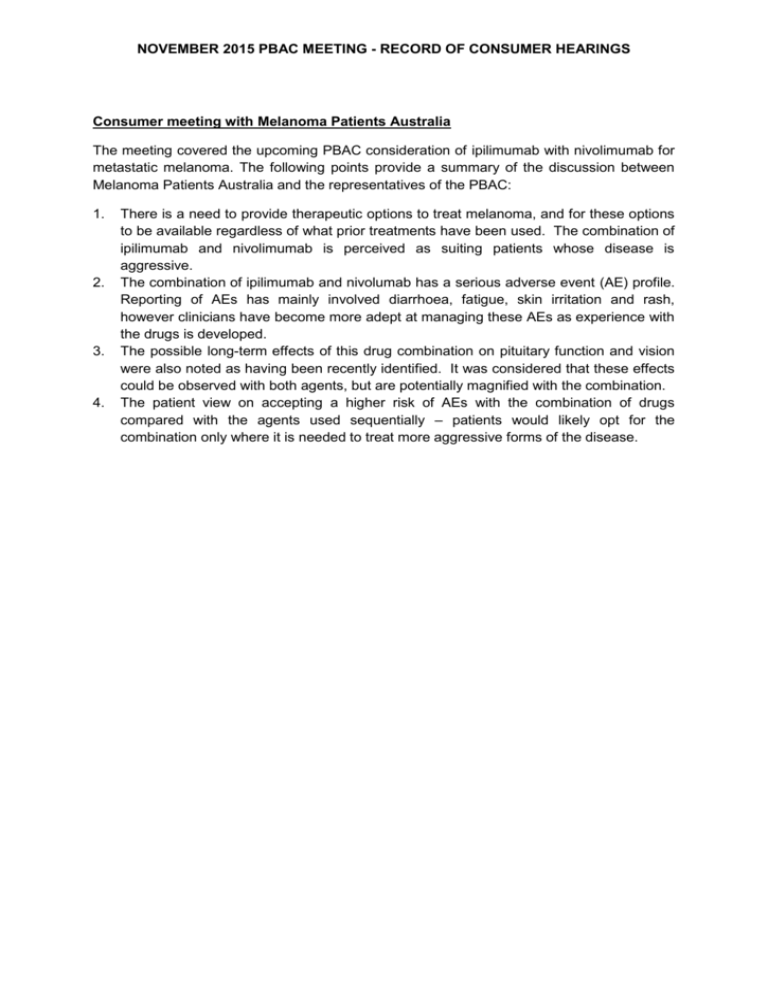
NOVEMBER 2015 PBAC MEETING - RECORD OF CONSUMER HEARINGS Consumer meeting with Melanoma Patients Australia The meeting covered the upcoming PBAC consideration of ipilimumab with nivolimumab for metastatic melanoma. The following points provide a summary of the discussion between Melanoma Patients Australia and the representatives of the PBAC: 1. 2. 3. 4. There is a need to provide therapeutic options to treat melanoma, and for these options to be available regardless of what prior treatments have been used. The combination of ipilimumab and nivolimumab is perceived as suiting patients whose disease is aggressive. The combination of ipilimumab and nivolumab has a serious adverse event (AE) profile. Reporting of AEs has mainly involved diarrhoea, fatigue, skin irritation and rash, however clinicians have become more adept at managing these AEs as experience with the drugs is developed. The possible long-term effects of this drug combination on pituitary function and vision were also noted as having been recently identified. It was considered that these effects could be observed with both agents, but are potentially magnified with the combination. The patient view on accepting a higher risk of AEs with the combination of drugs compared with the agents used sequentially – patients would likely opt for the combination only where it is needed to treat more aggressive forms of the disease. NOVEMBER 2015 PBAC MEETING - RECORD OF CONSUMER HEARINGS Consumer meeting with Leukaemia Foundation The meeting covered the upcoming PBAC consideration of lenalidomide for multiple myeloma. The following points provide a summary of the discussion between Leukaemia Foundation and the representatives of the PBAC 1. A key to achieving the best possible treatment outcomes in myeloma is for the patient to be able to tolerate more lines of therapy. Access to the best possible option early in the treatment pathway is important, as is the reduction in adverse events – neurotoxicity is considered a dose-limiting factor in the case of thalidomide. 2. The availability of oral agents is highly attractive to patients being treated for myeloma. In the case of bortezomib, the dosing schedule requires regular infusions which present a substantial burden on patients. 3. The following points relating to the PBS treatment algorithm for myeloma were discussed: Bortezomib is available in first line and for rechallenge – this gives access to an effective drug in a certain patient group; While treating a patient, clinicians are mindful of potential options further down the algorithm so as to preserve the patient’s eligibility for the maximum number of therapeutic options; Lenalidomide will likely be used until disease progression, were it to be recommended in first-line treatment. The condition is believed to evolve as the patient is exposed to different lines of therapy, and anecdotally it has been reported that patients can respond to lenalidomide rechallenge following a failure to respond to initial exposure to the drug. 4. The Committee heard that if lenalidomide were to be recommended for first-line treatment, it would likely replace bortezomib and thalidomide. 5. Of particular note, the current listing for lenalidomide does not permit retreatment after disease progression – this position is not supported by the clinical or patient communities.
